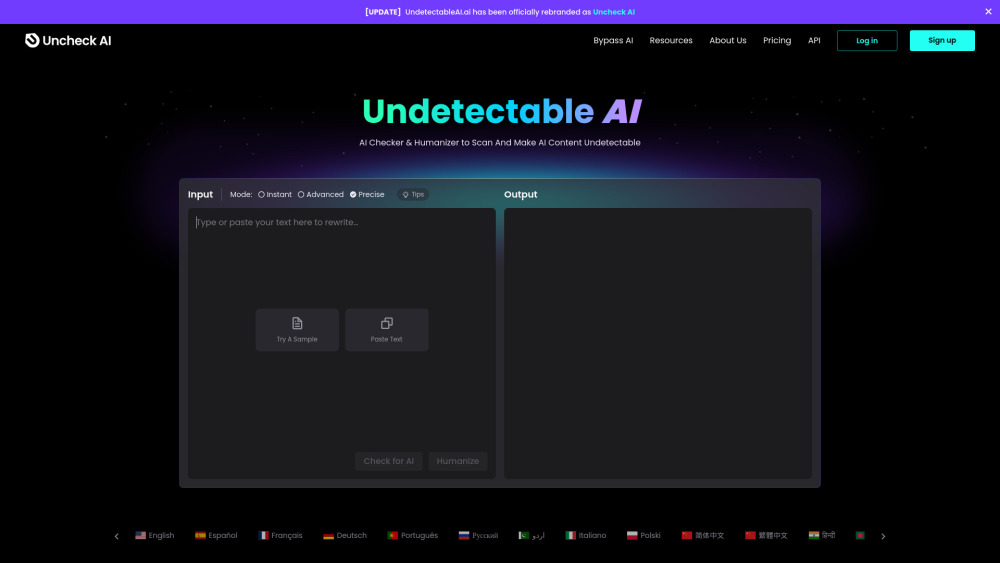GPT-2 Output Detector - Identify AI-Generated Text
Product Information
Key Features of GPT-2 Output Detector - Identify AI-Generated Text
Accurate text analysis, reliable predictions, and a user-friendly interface make this detector a valuable resource for identifying AI-generated content.
Advanced Text Analysis
Utilizes the RoBERTa model to analyze the input text and predict the probability of it being AI-generated.
Real-Time Predictions
Provides instant predictions as you enter the text, allowing for quick identification of AI-generated content.
User-Friendly Interface
Easy-to-use interface makes it simple to input text and view the predicted probabilities.
Reliable Results
Results become more reliable after around 50 tokens, providing a high degree of accuracy in identifying AI-generated text.
Open-Source Implementation
Based on the Hugging Face Transformers implementation of RoBERTa, ensuring transparency and community involvement.
Use Cases of GPT-2 Output Detector - Identify AI-Generated Text
Identify AI-generated content in academic papers or research articles.
Detect AI-generated text in social media posts or online comments.
Use in content moderation to filter out AI-generated spam or misinformation.
Integrate into writing tools to help authors identify and improve their writing style.
Pros and Cons of GPT-2 Output Detector - Identify AI-Generated Text
Pros
- Provides accurate predictions for identifying AI-generated text.
- Easy to use and integrate into various applications.
- Open-source implementation ensures transparency and community involvement.
Cons
- May not be foolproof, with some AI-generated text potentially evading detection.
- Requires a minimum of 50 tokens for reliable results.
- May not work well with highly specialized or technical text.
How to Use GPT-2 Output Detector - Identify AI-Generated Text
- 1
Enter the text you want to analyze in the text box.
- 2
View the predicted probabilities below the text box.
- 3
Use the results to identify whether the text is AI-generated or not.
- 4
Refer to the FAQs and documentation for more information on usage and limitations.






